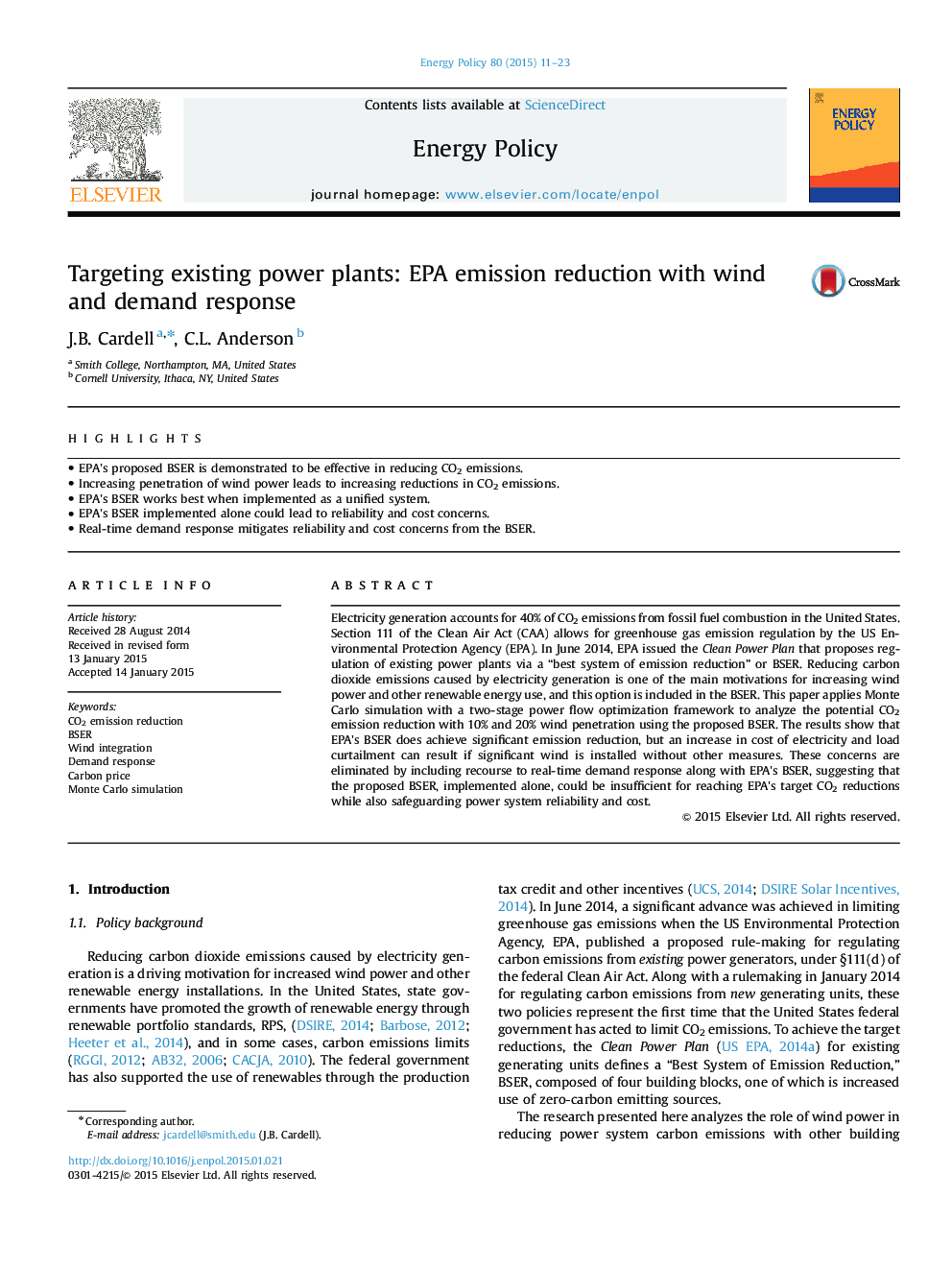| Article ID | Journal | Published Year | Pages | File Type |
|---|---|---|---|---|
| 7401110 | Energy Policy | 2015 | 13 Pages |
Abstract
Electricity generation accounts for 40% of CO2 emissions from fossil fuel combustion in the United States. Section 111 of the Clean Air Act (CAA) allows for greenhouse gas emission regulation by the US Environmental Protection Agency (EPA). In June 2014, EPA issued the Clean Power Plan that proposes regulation of existing power plants via a “best system of emission reduction” or BSER. Reducing carbon dioxide emissions caused by electricity generation is one of the main motivations for increasing wind power and other renewable energy use, and this option is included in the BSER. This paper applies Monte Carlo simulation with a two-stage power flow optimization framework to analyze the potential CO2 emission reduction with 10% and 20% wind penetration using the proposed BSER. The results show that EPA's BSER does achieve significant emission reduction, but an increase in cost of electricity and load curtailment can result if significant wind is installed without other measures. These concerns are eliminated by including recourse to real-time demand response along with EPA's BSER, suggesting that the proposed BSER, implemented alone, could be insufficient for reaching EPA's target CO2 reductions while also safeguarding power system reliability and cost.
Related Topics
Physical Sciences and Engineering
Energy
Energy Engineering and Power Technology
Authors
J.B. Cardell, C.L. Anderson,
